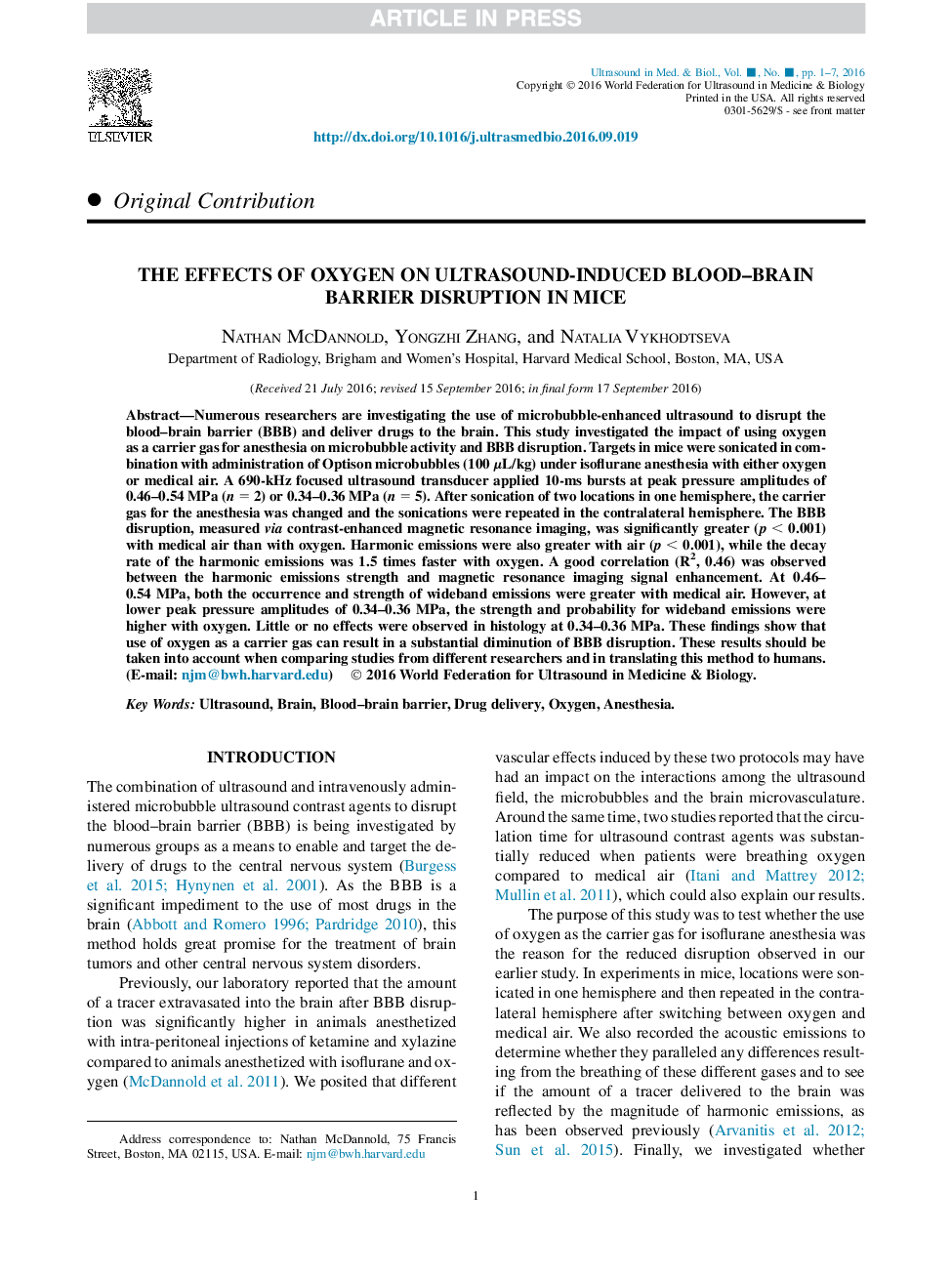| Article ID | Journal | Published Year | Pages | File Type |
|---|---|---|---|---|
| 5485702 | Ultrasound in Medicine & Biology | 2017 | 7 Pages |
Abstract
Numerous researchers are investigating the use of microbubble-enhanced ultrasound to disrupt the blood-brain barrier (BBB) and deliver drugs to the brain. This study investigated the impact of using oxygen as a carrier gas for anesthesia on microbubble activity and BBB disruption. Targets in mice were sonicated in combination with administration of Optison microbubbles (100 μL/kg) under isoflurane anesthesia with either oxygen or medical air. A 690-kHz focused ultrasound transducer applied 10-ms bursts at peak pressure amplitudes of 0.46-0.54 MPa (n = 2) or 0.34-0.36 MPa (n = 5). After sonication of two locations in one hemisphere, the carrier gas for the anesthesia was changed and the sonications were repeated in the contralateral hemisphere. The BBB disruption, measured via contrast-enhanced magnetic resonance imaging, was significantly greater (p < 0.001) with medical air than with oxygen. Harmonic emissions were also greater with air (p < 0.001), while the decay rate of the harmonic emissions was 1.5 times faster with oxygen. A good correlation (R2, 0.46) was observed between the harmonic emissions strength and magnetic resonance imaging signal enhancement. At 0.46-0.54 MPa, both the occurrence and strength of wideband emissions were greater with medical air. However, at lower peak pressure amplitudes of 0.34-0.36 MPa, the strength and probability for wideband emissions were higher with oxygen. Little or no effects were observed in histology at 0.34-0.36 MPa. These findings show that use of oxygen as a carrier gas can result in a substantial diminution of BBB disruption. These results should be taken into account when comparing studies from different researchers and in translating this method to humans.
Related Topics
Physical Sciences and Engineering
Physics and Astronomy
Acoustics and Ultrasonics
Authors
Nathan McDannold, Yongzhi Zhang, Natalia Vykhodtseva,
